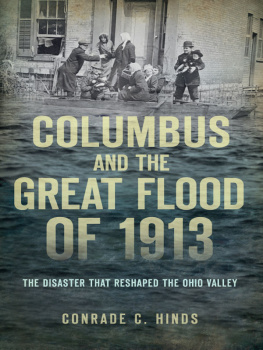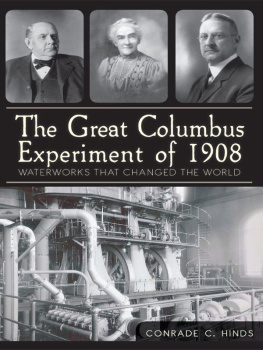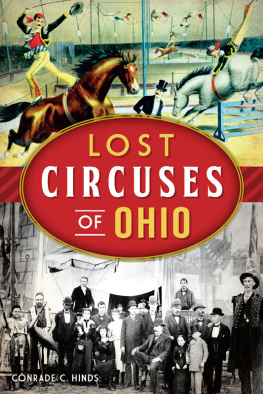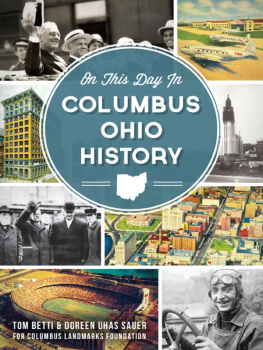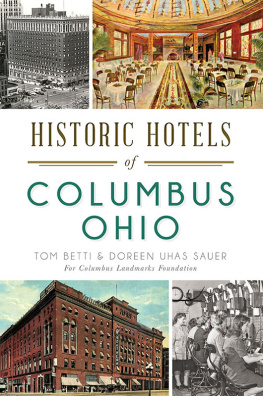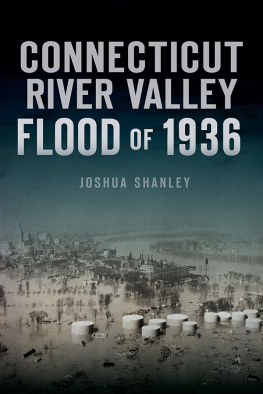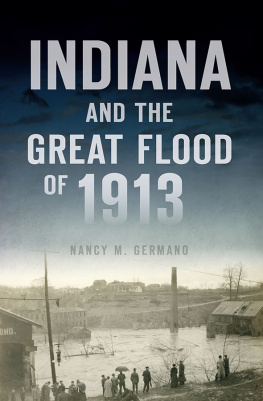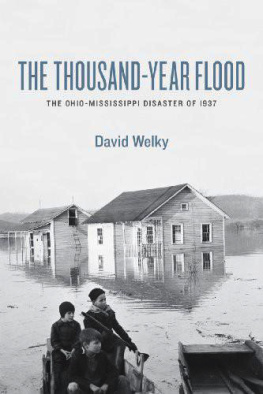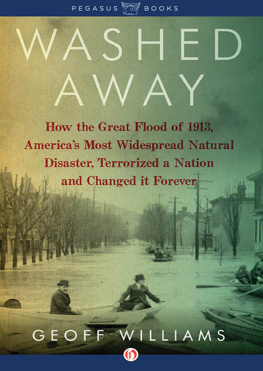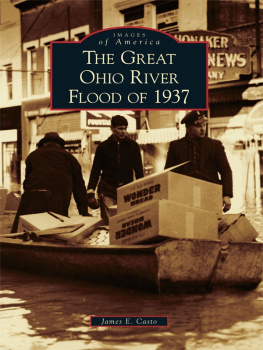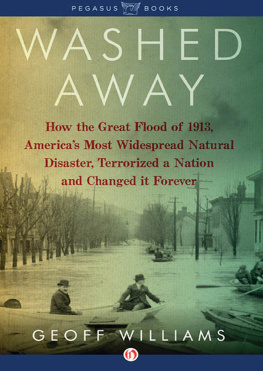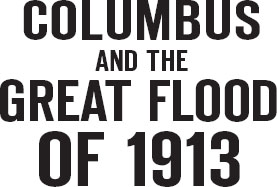

Published by The History Press
Charleston, SC 29403
www.historypress.net
Copyright 2013 by Conrade C. Hinds
All rights reserved
First published 2013
e-book edition 2013
Manufactured in the United States
ISBN 978.1.62584.517.7
Library of Congress CIP data applied for.
print edition ISBN 978.1.62619.061.0
Notice: The information in this book is true and complete to the best of our knowledge. It is offered without guarantee on the part of the author or The History Press. The author and The History Press disclaim all liability in connection with the use of this book.
All rights reserved. No part of this book may be reproduced or transmitted in any form whatsoever without prior written permission from the publisher except in the case of brief quotations embodied in critical articles and reviews.

Dana Avenue Elementary School opened for the 191213 school year. CPS.
This book is especially dedicated to the lifetime spirit of learning and sanctuary at the Dana Avenue Elementary School of Columbus Franklinton area. In addition to being a flood survivor and a fortified castle of early education for six generations of Columbus children, the physical building served as one of many refuge and relief stations for hundreds of people who instantly lost their homes to floodwater when the south bank levee of the Scioto River broke on March 24, 1913. The swift-flowing water penetrated the lower levels of the building, but the masonry and concrete foundations held firm. They did not give way to the pounding they received from the muddy flood currents and nearly endless debris. Today, a plaque is mounted on the wall of the main floor corridor that indicates the point near the ceiling where the floodwater crested above the floor inside the building. Unfortunately, when the flood was over, twelve neighborhood children who attended Dana Avenue were counted with the casualties. The Dana Avenue Elementary School is a profound Columbus landmark not because of the age of its bricks and mortar but because of the lives that the structure has helped save, shape and foster. This building even stands as the birthplace of a baby during the 1913 flood. The mother named her Dana Rose because the school gave the expecting mother comfort and security when she had no other place to lay her head. Baby Dana Rose was born in room 11 according to the schools register book. It is a story such as this that, if remembered and consistently retold, breathes a meaning of life into the elementary school that sustains the communitys hope and confidence to stand and accept future challenges. Dana Avenue Elementary School is a Columbus landmark that has stayed constant, evolving from blackboards when the school first opened its doors in 1912 to the current Smart Boards.
CONTENTS
PREFACE
In writing this book about the 1913 flood, I hope to spotlight attention to another event that served to shape the Columbus metropolitan community and much of Ohio as we know it today. If a first-time visitor to Columbus looked at the civic improvements along the downtown Scioto River waterfront, they would be amazed. Why? Because for a city not widely known for having a grand downtown waterway like San Antonios Paseo del Rio river walk, Columbus has made improvements along the banks of the Scioto that inspire a feeling of awe. Two landmarks that stand out as unique are the full-scale replica of Christopher Columbuss Santa Maria ship on the east bank and the larger-than-life Columbus Museum of Science and Industry on the west bank. Both sites are positioned very well in relation to the river and the main eastwest thoroughfare crossing the river, the Broad Street Bridge. The main event of the twentieth century that ties all three of these landmarks together is the March 1913 flood. The flood was not as destructive as the 1971 Chicago Fire, but to Columbus and many other Ohio Valley cities, it was just as influential in its impact on future development.
I would like to give Columbus and Ohio a look at what has created our community and culture beyond the daily low expectations of faddish fast food, football and video games. This is not just another look at a natural disaster. Instead, it highlights how Ohioans have traditionally approached disasters, not as victims but as problem solvers.
ACKNOWLEDGEMENTS
Ohio wasnt built by America, but it is my opinion that America was built by Ohios broad application of its profound innovative spirit, and for that I am very grateful.
Thank you to Tom Betti and Doreen Uhas Sauer for extending an invitation to participate in writing a book for the Columbus Landmarks Foundation history book series and to my wife, Dr. Janet L. Hinds, for her help in scholarly research and generous sharing. Thanks to the Education Committee of the Columbus Landmarks Foundation for its insight and creativity. A note of gratitude goes to Eleanor Walters, Marshall Hinds, Roger C. Huff, Jack and Linda Solt, William Poteet, Kris Akins, Alexander Malone, Al Manning, Ray Harpham, Don Barnes, Al Wansing and the late Doug Brookhart for all their positive encouragement, help and patience, as well as for opening the doors of opportunity for me over the past forty or more years. And my continued thanks go to those who support preserving the Columbus community and Ohio heritage as an international leader of innovation, invention and civic problem solving.
Special thanks to my late parents and grandparents, Dr. Conrade and Ada Hinds and Russell and Ethel Davidson, respectively, and Minerva Saddler for sharing their insight and wisdom. Id also like to extend my deepest warm acknowledgement to Charles Rinehart for his confidence in me as an educator. I give my grateful appreciation to John Sauer for his constructive editing and to Bill Mattes, Ed Lentz and the Board of Columbus Landmarks Foundation for their support, as well as the ever-creative Education Committee. And finally, a gracious thank-you goes to Sandy Andromeda of the Franklinton Historical Society and Joe Gartrell of The History Press.
Photo credits include image from Columbus Metropolitan Library Image Collections (CML), Columbus Public Schools (CPS), Columbus Dispatch (CD), Conrade Hinds Collection (CH), private collection (PC), Ohio Historic Society (OHS), Columbus Division of Water (CDW), Library of Congress (LOC) and Wright State University Libraries, Special Collections and Archives (WSUL).
INTRODUCTION
Often we hear and see how a community rallies the very best of human nature and puts it into diligent practice during times of natural disasters. This is because disasters force humans to focus on the first priority of life: to survive. Progress is generally achieved rapidly when people using common sense to quickly discern that the odds of survival increase through mutual cooperation. But for those who feel routinely disenfranchised, such as a number of urban citizens during the aftermath of Hurricane Katrina, their only thoughts of surviving may be through taking advantage of others by looting, demonstrating classic dog-eat-dog behavior. This is probably because they normally exist in an at-risk social environment with very little mutual cooperation. Given this, a natural disaster is only a catalyst to more self-centered preservation behavior. Surviving the 1913 flood throughout the Midwest routinely meant opening ones mind to helping and being helped by others. For many, this even took the shape of the ultimate sacrifice when people gave their lives in an effort to rescue others.
Next page
